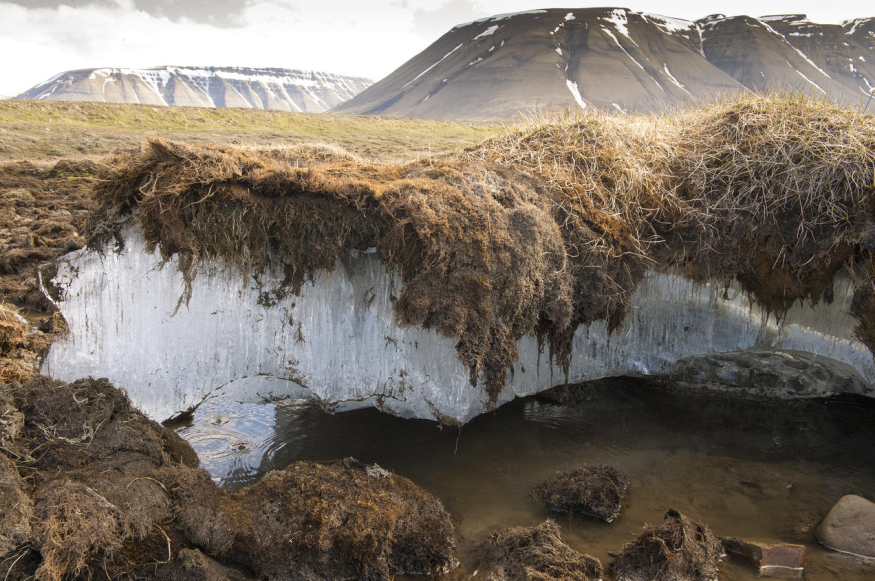Based on a University of Alberta research scientist associated with an international study, defrosting permafrost soil structure throughout the rapidly changing climate in the Arctic will emit even more greenhouse emissions as massive industrialized nations through the end of the 21st century.
"Emission levels from defrosting permafrost will continue to be roughly comparable to somewhere around 60 and 80 billion tonnes of carbon throughout the next 80 years, which represents a percentage comparable to the current greenhouse gas emissions from Western Europe," asserts researcher David Olefeldt of the Faculty of Agricultural, Life & Environmental Sciences, the study's lone Canadian co-author.
As per Olefeldt, the carbon storage in permafrost is simply the consequence of hundreds of thousands of organic materials that have frozen and will not disintegrate if left undisturbed. "It's essentially similar to sticking stuff in the fridge - they'll remain in there for a long period until you commence melting them out and subjecting them to microbiological destruction," he emphasized. Permafrost plays a key role in carbon storage, accumulating almost twice as much carbon than what is currently present in the environment, as reported by News Wise.
Permafrost Releasing Much Greenhouse Gasses
The study, spearheaded by Northern Arizona University as well as the international Permafrost Carbon Network, continues to draw on even more than a decade of statistical information from permafrost field observation across the world to foresee incremental emission levels from this "country of permafrost" through 2100 under low, medium, as well as high-temperature increase instances.
In accordance to the scientists' study, under a mild warming scenario - one that might be realized if the entire international community confined melting to 2 degrees Celsius - permafrost might leak 55 billion tonnes of greenhouse gasses through the end of the 21st century mostly by the form of methane and carbon dioxide.
Ultimately, the paper highlights nine different hypothetical outcomes dependent on how global warming advances and also what steps international leaders choose to cut emissions of fossil fuels. Although it is vital to highlight how huge the releases might be under the hottest circumstances, Olefeldt acknowledges that there is currently no circumstance in which carbon emissions from prolonged permafrost melting would overtake the human-made crisis, as stated in a report from Eurekalert.

ALSO READ: Melting Permafrost Opened Massive Sinkholes That Can Devour 6-Story Buildings in Arctic Seafloor
Arctic Region's Constant Response
"It isn't likely to lead to runaway global warming," he claims, "but it definitely contributed an accelerant to global warming and serves as an essential component of the world's future carbon dioxide in the atmosphere balance."
The researchers underline that continuous worldwide initiatives aimed at reducing emissions would have to include this "permafrost country" in environmental objectives and activities.
This same paper also addresses the difficulties in assessing the potential emissions of greenhouse gasses from melting permafrost. Whenever permafrost melting causes the earth's surface disintegration, it can result in considerable greenhouse gas emissions; nevertheless, only one-fifth of the present permafrost terrain is thought to be susceptible to a sudden thaw. Also, it's unclear whether the thawing will result in wetter as well as drier grounds, that important since wetter soils encourage methane emissions, a rather more prevalent greenhouse emission.
Furthermore, as the second-largest Arctic region, Canada should bear the brunt of the upcoming emission levels rise, which would be likely to endure for generations, as per Olefeldt. These findings were reported in the Annual Review of Environment and Resources.
Olefeldt concluded by saying that "even though humankind ceased emitting fossil fuels midway through this century, the Arctic will maintain its response for several hundreds of years further than that," according to Mirage News.
RELATED ARTICLE : New Lake in Alaska Formed Through Permafrost Thaw Belches Methane Posing Threat to the Atmosphere
Check out more news and information on Melting Permafrost in Science Times.











